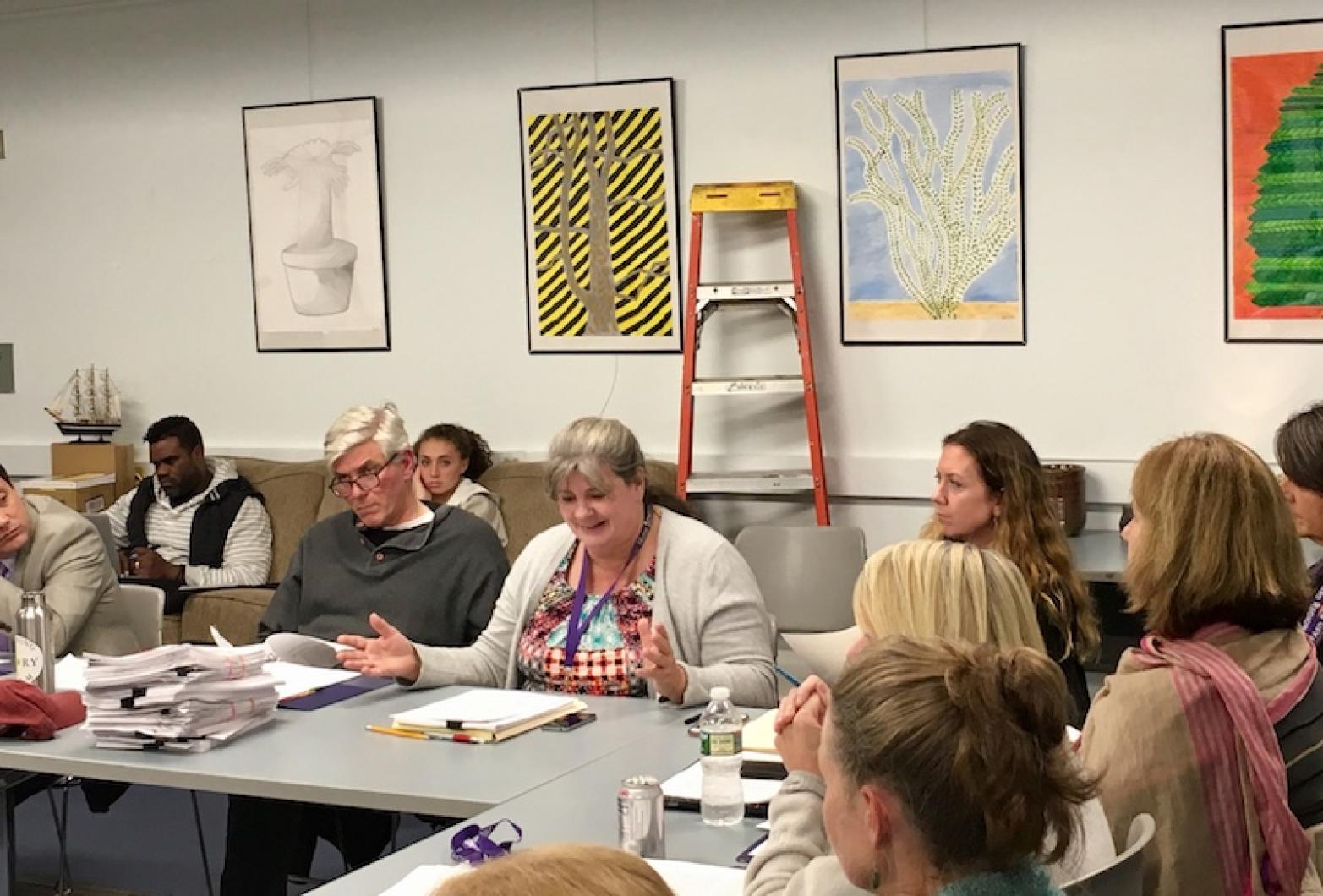An unanticipated influx of students at the regional high school who speak little or no English has created an immediate need for another English language learner (ELL) teacher and a full-time bilingual interpreter, high school administrators told the regional district school committee Monday night.
Administrators said the unbudgeted positions ideally should be filled in time for the winter semester that begins in January.
“We work hard to plan and to build programs that respond to a range of needs at MVRHS,” high school principal Sara Dingledy told the committee. But she said 14 to 16 new students who need English support have enrolled since the school year started, overwhelming the ELL program. She said with that influx, the ELL program has a population of about 75 students and counting.
“This year, we’ve realized that the numbers we predicted weren’t entirely accurate,” Ms. Dingeldy said.
The school committee voted 6-1 to promptly advertise the positions, despite not knowing exactly where the funding will come from to pay for them. Committee member Jeffrey (Skipper) Manter 3rd cast the lone no vote, citing discomfort with the approach of advertising the position before identifying the source of the money.
School accountant Mark Friedman estimated he would have to find some $90,000 in the school’s $22 million budget to fund the two positions for the rest of the school year, although he said that number could change depending on the candidates.
“I’m continuing to look at this. There is not a ready pot of money that is easily accessible for us. We have budgeted pretty leanly,” Mr. Friedman said. But he also said he was confident he would be able to find options to present to the school committee by the next meeting in December.
High school ELL program director Diane Norton presented explanatory data to the committee, including a graph tracking growth of the ELL enrollment population since 1999.
“There’s five times as many ELLs right now as there were five years ago,” Ms. Norton said. She said the school often sees an influx of new students in the second semester because the school year in Brazil ends in December.
Most of the non English-speaking students in Island public schools are Brazilian. Islandwide, there are now 327 students in English language learning (ELL) programs in the public schools, making up more than 15 per cent of the student body.
Ms. Norton said the current ELL class sizes at the high school are between 22 and 28 students but should be closer to 16 students in order to give adequate time for the four language learning domains of listening, speaking, reading and writing. Teachers in elective classes such as physical education and health classes have also struggled to connect with students who do not speak English, Ms. Norton said. She said a bilingual English-Portuguese interpreter would help with instruction in Career Technical Education classes, earth science, and gym and health classes.
“I do think there is an urgency now given the unknown pattern that we saw from September until now where we have 14 to 16 new admits, most of whom are coming in without any English proficiency at all,” Ms. Dingledy said.
School committee members and high school administration agreed the issue is pressing, and many said they would consider all options, including going back to the towns for supplemental budget funding.
“We need to give the support to these students in January so we need a plan as to how we’re going to do it,” school committee member Amy Houghton of Tisbury said.
“If that drives us into deficit then the onus is on us to figure it out,” school committee member Robert Lionette of Chilmark said. “This is a very real need that has to be met.”
“Your case is a rock-solid one,” school committee chairman Kris O’Brien of Oak Bluffs told Ms. Norton. “I don’t think there’s anybody here that would disagree that there’s a need that we want to provide for. It’s just figuring out how we’re going to provide for a full-time staff and a full-time [interpreter].”
Leah Palmer, who is the ELL director for the Island public schools, said rapidly filling the positions will pose its own challenge.
“It is hard because it’s a middle-of-the-year job,” Ms. Palmer said. “We don’t know until we put it out there. The truth is that ESL positions are very hard to fill.”







Comments
Comment policy »